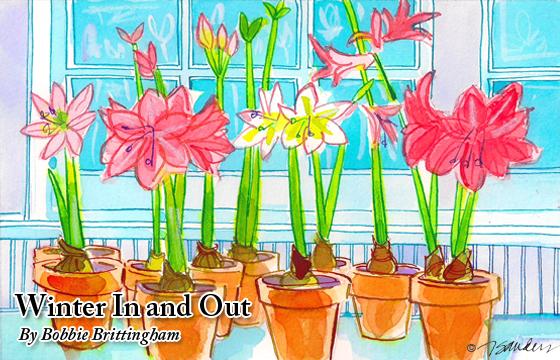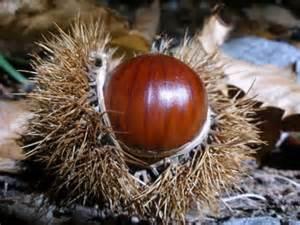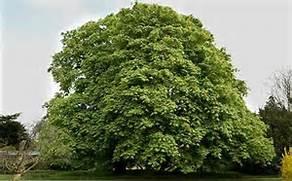It is amazing how much time and energy plus money that it takes to pull off the Christmas Holidays. Heaving all the decorations out of the attic, garage, basement or from under the bed is only the mere start of this annual hectic time. The amount of strategy and planning is not something that is in my daily routine. Trying to keep some of the hallowed family traditions alive is demoralizing. Some have grudgingly made their way to my memory’s historical archives of Christmases past. I have to utilize every brain cell I have to get only the most important and reverent of treasured traditions accomplished. Then within an a few days it all has to be untangled, re-wrapped, re-boxed, repaired, and restored or rather re-stuffed back in its obscure hiding place.
Now that Christmas is packed away, and the house is in some state of normal caucus it may seem a little uninteresting or lacking some visual interest. It will be a long time until spring brings some color to the garden for you to bring into the house. The outside landscape which now is a depressing gray and tan and brown. Lovely for the spirit. The solution is to bring something living into the house. Of the animal, vegetable, and mineral choices, the vegetable seems a less complicated choice. Many of the garden centers, if open, will have a selection of green or blooming houseplants for that touch of life in the winter home. Unless you received one as a gift or bought the traditional poinsettia. To me, poinsettias are a plant for a two weeks and then can go to the heavily endowed plant heaven. Trying to keep and bring them to an adequate blooming phase next year is not worth the extreme effort required to do so. MUCH easier and better results to purchase a new one next year. If you want to try something more fun and rewarding, just go to the vegetable bin. There you can find many items that can be seduced into growing inside the house during the winter. A sweet potato suspended in or just touching some water will send roots into the water and then a vine will begin to grow, and it will not stop for a long time. The pretty purpled leaves love the sun and will continue to ramble where you lead them. A regular white potato will give some good results, but I prefer the color of the sweet potato. If you use a glass container then, you can keep an eye on the water level, and children will delight in watching the roots growing.
Another vegetable is an avocado pit. Arrange three or four toothpicks around the side of the pit and suspend over water. It will sprout, and a green tree trunk will start to grow. It can be potted in soil after it has developed several leaves. I know some people who have kept these going for years. I am not sure if they have had a harvest yet, but just the fun of growing it is enough reward. I have heard onions, carrots, and even a pineapple can all be handled in similar manners. These are fun activities to help bring a little life into the home. Somehow just adding some living green or color to your inside spaces will lift and brighten the internal spirit.
Now, on the other hand, if you have started to force some daffodil, tulip or amaryllis bulbs you have those to look forward to bloom inside. Or, just buy a handsome new green or blooming (favorite – orchid) houseplant that are readily available at many stores. Many don’t cost too much and can give months of pleasure. In the summer, you can move the houseplants to your outside living spaces. In any event to brighten your public and private living spaces that can become forlorn after the bright and sparkly decorations of Christmas are removed add a fresh lovely houseplant or a blooming plant They will instantly make you realize that spring will come even if the weather outside is frightful.
I often walk in the garden during the somewhat warmer days of winter looking for a little life of some form that will show me the garden has not gone to bed forever. This is a good time to look at your garden and ask questions. Questions that help achieve the look you want. If you don’t know what look you want then, it might be the time to decide. Even the most beautiful natural garden has had a little bit of help to get it there. Sometimes mother nature gets a little carried away and needs to be reined in. With any good garden, there need to be some architectural structure. These are called the backbones or BONES of the garden. They give the garden a solid feeling. They are supporting the rest of the plants in a visual pleasing, balanced way. These features can be manmade such as a fence, columns, arbor, gate, a large urn or pot, a bird bath, anything that will give the eye something solid to look at. The bones can be of plant material such as evergreens, ornamental grasses that have been left with their blossoms on and even the trunks of trees and shrubs can add that visual interest with their structure and bark texture. These can all add visual interest when the winter season clamps down and not much else is in the landscape.
So now is a good time to take stock of your garden’s bones. If you don’t see these bones/visual interest it will present an opportunity to explore some solutions. The many nursery and garden catalogues that have started to arrive with their enticing pictures and descriptions should enable you to find some answers. They are always filled with ideas for containers, border designs, problem area solutions and plant companions. I caution not to be combined into think that your garden will look like the pictures. Seldom does anyone’s garden look like the picture. Not even the garden the picture was taken in looks like the picture. They are all Photoshopped. But the catalogues can offer many different and exciting ideas that you can adapt to your own situation. Dreaming about how you would love your garden to look is a wonderful way to spend the afternoon in a sunny spot looking out the window at your picture perfect garden.





